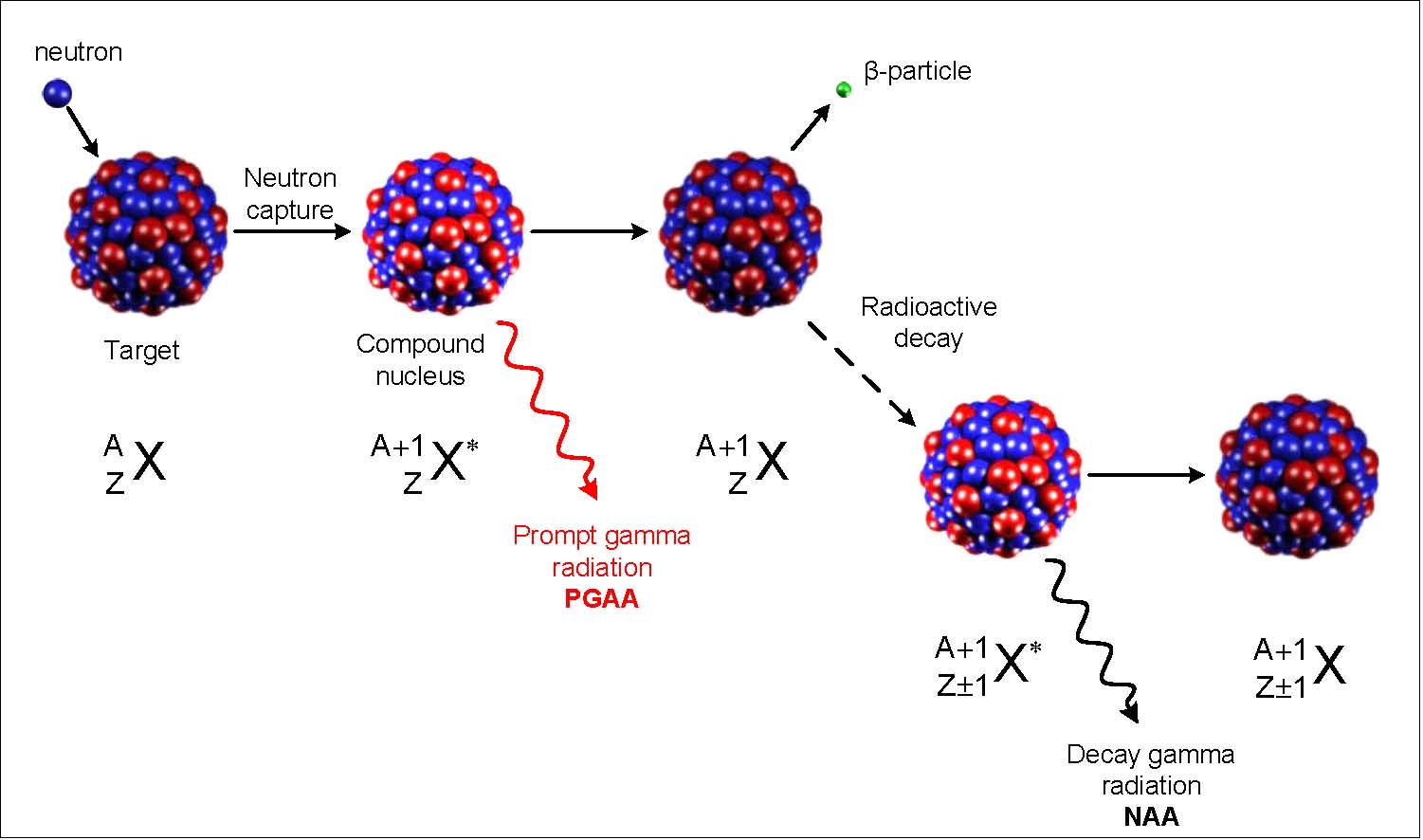Taking Measure
Just a Standard Blog

At the PGAA instrument in the NIST Center for Neutron Research guide hall with a replica of a jade spearhead.
Most people think that understanding and preserving our cultural heritage is mainly the concern of the social sciences and humanities, such as archaeology and art history. But physical sciences, including physics and chemistry, often play a large role as well. Determining the elemental composition, or signature, of archaeological finds or objects in museum collections can provide insight into early civilizations. For example, we can learn the origins of stone, clay and sometimes metal objects through their elemental signatures. This can tell us about where people lived and worked and who they traded with, among other things.
Because of the vast variations in natural and societal conditions across space and over time, the reliability of the analyses often depends on getting data from many samples. Therefore, scientists must spend a lot of time and effort preparing samples, performing measurements and processing data. Because some of the artifacts are irreplaceable, scientists often must use nondestructive methods that can reveal the object’s composition without cutting it into pieces. For this reason, scientists at the world’s major research reactors, including the NIST Center for Neutron Research, use a technique known as prompt gamma activation analysis (PGAA) for analyzing the composition of cultural artifacts quickly and nondestructively.

PGAA works by first bombarding the sample with a stream of subatomic particles called neutrons, produced from a nuclear reactor. Because neutrons have no electrical charge, they can burrow deeply into the sample. Each of these neutrons can then be captured by an atom in the sample — specifically the core of an atom, known as its nucleus. The resulting “compound nucleus” with the extra absorbed neutron has too much energy; it is highly unstable.
The nucleus releases the extra energy partially in the form of radiation known as gamma rays, or very high energy photons. Gamma rays that are released immediately during the neutron bombardment are called “prompt” gammas. If the nucleus is still unstable, it undergoes further radioactive decay, which can produce “delayed” gamma rays. The energies of these escaping gamma rays enable scientists to identify the different elements in the sample.
Compared with traditional instrumental neutron activation analysis, in which samples are transported inside the reactor core for neutron irradiation and retrieved to measure delayed gamma rays over time periods ranging from milliseconds to years, PGAA offers in-neutron-beam analysis and simplified measurement procedures while keeping the bulk of the sample intact. Both delayed and prompt gamma rays are produced by most elements, but some elements such as boron and hydrogen have no delayed gamma rays and therefore can only be probed by PGAA.
Recently, my group demonstrated how PGAA would work for cultural artifacts by doing an analysis of nephrite, one of two types of mineral referred to as jade. This analysis would help determine the feasibility of using PGAA to identify the source of ancient Chinese jade objects. Nephrite, which is a variety of the mineral actinolite, comes from various regions across Asia. While the major elements that make up nephrite are the same everywhere, nephrite from different regions has different trace elements, which can be used to create elemental signatures for determining where the artifact came from.

Our analysis was performed on reference specimens on loan from the Smithsonian Institution of nephrite from four source regions in Asia, as well as a modern-day replica of a Chinese dagger blade made with nephrite sourced from Wyoming. We collected prompt gamma-ray spectra from each sample and analyzed the energy peaks of the gamma rays to determine the ratio of iron, manganese, chromium and nickel to silicon. A preliminary statistical analysis suggests that the origins of the samples can be grouped into three main clusters: Taiwan, Xinjiang and Dunhuang (China), and Siberia (Russia) roughly grouped with Wyoming.
This statistical analysis was based on only four elements. However, PGAA detected up to 28 elements in these samples. Our analytical techniques can make finer distinctions among the clusters, which can be used to narrow down the geographical areas of the source regions. To accomplish this, it will be necessary to apply PGAA to a larger set of well-documented nephrite samples from more source regions as well as cross-checking PGAA with other techniques. This is the objective of our future research.
About the author
Related Posts
Comments
Good






The use of new/better technology helps advance our understanding of cultural development and perhaps discern authenticity and matters of origin and intent. Forensics thrives on new approaches in discovering evidence.